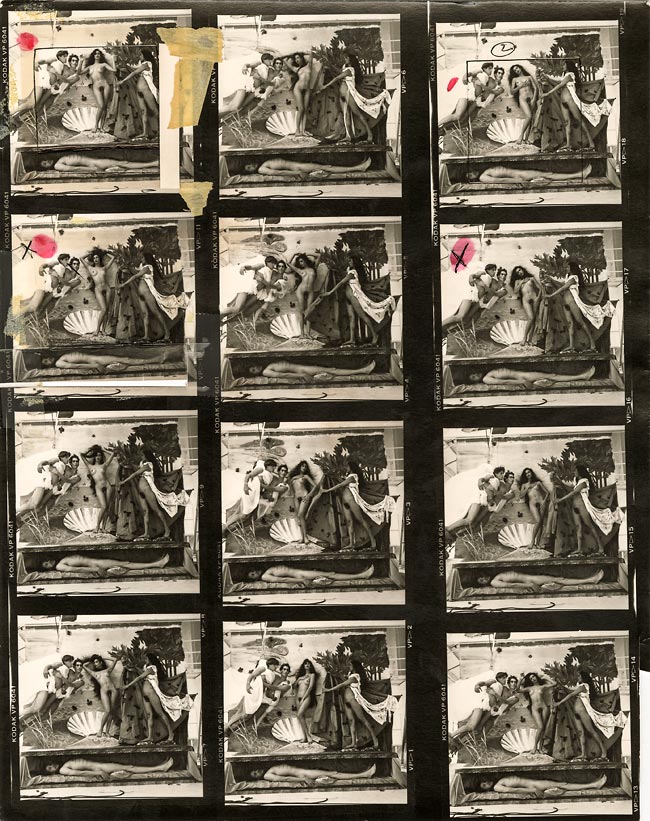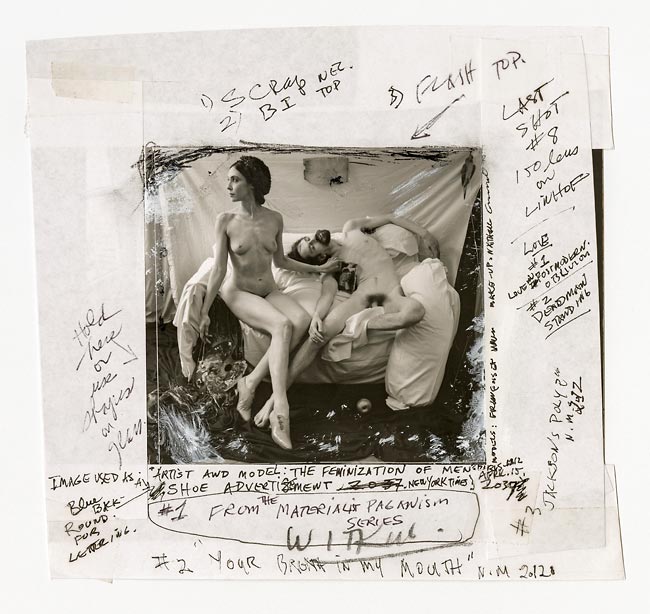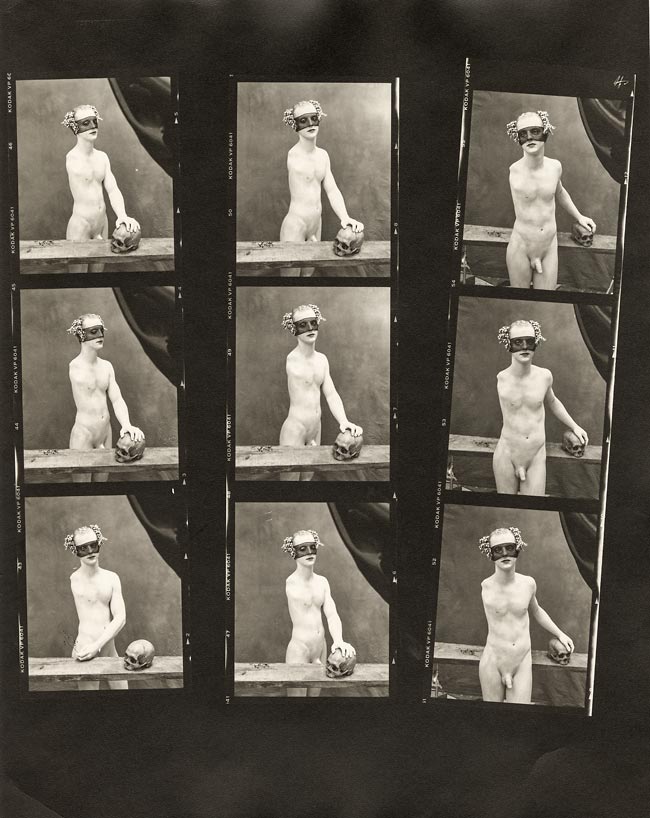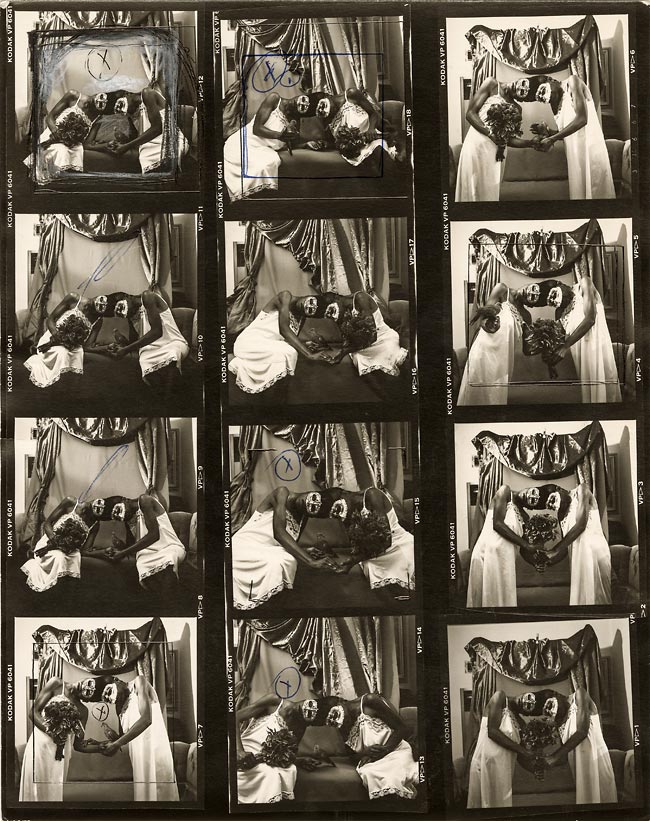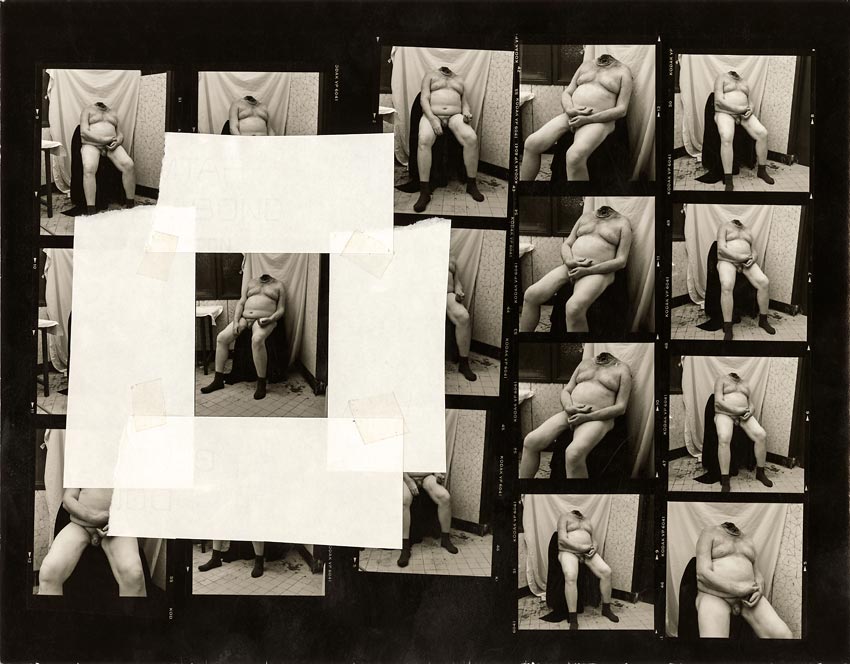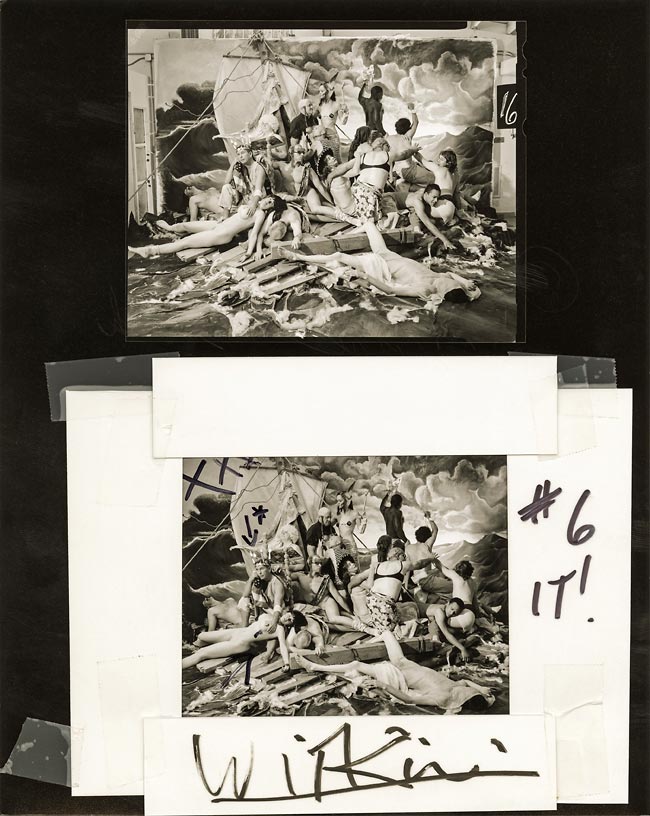Celebrated and excoriated in equal measure for his unflinching exploration of life, death, and the human body, Joel-Peter Witkin’s photographs are deeply connected to a longstanding tradition in Western art. Featuring hermaphrodites, still-lifes of body parts, explorations of eroticism and sado-masochism, and religious allegory – his pictures draw from the iconography of artists such as Albrecht Dürer, Oscar Rejlander, Francisco Goya, Georges Seurat, Pablo Picasso, and others. Witkin continues their use of symbolic and mythological imagery to reflect on the complexities of modern existence. In doing so, his work has sparked conversation about the boundaries of art and its ability to challenge societal norms. At the heart of this creative tension is the contact sheet, a raw and intimate part of his process that serves as the blueprint for his often controversial imagery.
Etherton Gallery has approximately 600 of Joel-Peter Witkin’s contact sheets, spanning the entirety of his career, which began in the early 1980s. For Terry Etherton, acquiring these contact sheets represents the culmination of 44 years as a gallerist, because few photographers are willing to make themselves so vulnerable. Each contact sheet reveals not only the photographer’s successes but also the nuances and mistakes that ultimately shape the final print. In a formal sense, they offer insight into Witkin’s decision-making process, framing choices, and conceptual evolution, providing a rare and intimate opportunity to witness the unfolding of the artist’s creative vision.
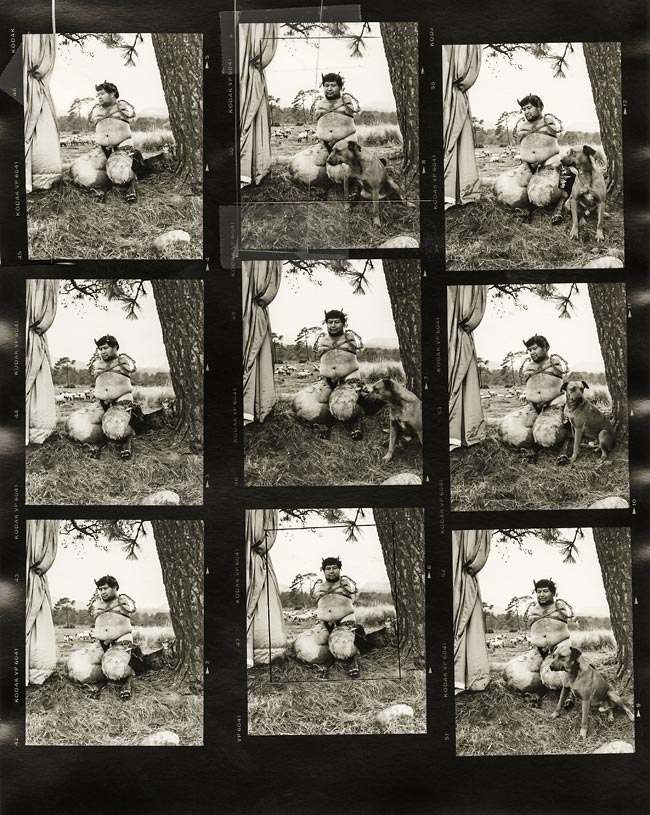
For Witkin, his contact sheets are far more than a tool for selecting a final image. They represent a critical moment in his creative process, where the emotional and conceptual weight of the photograph begins to crystallize. They are visual roadmaps that capture not only his technical decisions but also the evolution of his provocative imagery. Witkin has described this phase: “I make contact sheets to see the best image from a ‘shoot’. I usually know instantly which is the best image – but I make contact sheets to show which image truly has “everything’ I want in an image.”
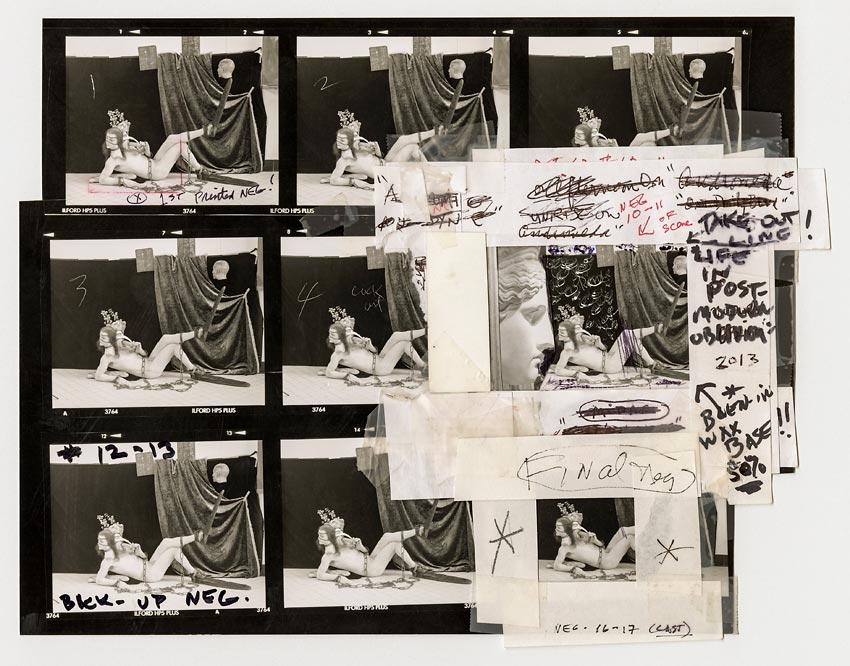
This evolving quality of Witkin’s contact sheets set them apart – they are not simply a step toward the final photograph but a dynamic space for exploration. While most images lead directly to the finished print, others may evolve through more experimental processes. Occasionally, Witkin will embellish the contact sheet or print with collaged materials and/or text, creating unique maquettes that shift the work into new, unexpected directions. These rare works provide a tactile, multi-layered dimension to his photographs, where texture and form evince the fluidity of his conceptual development.
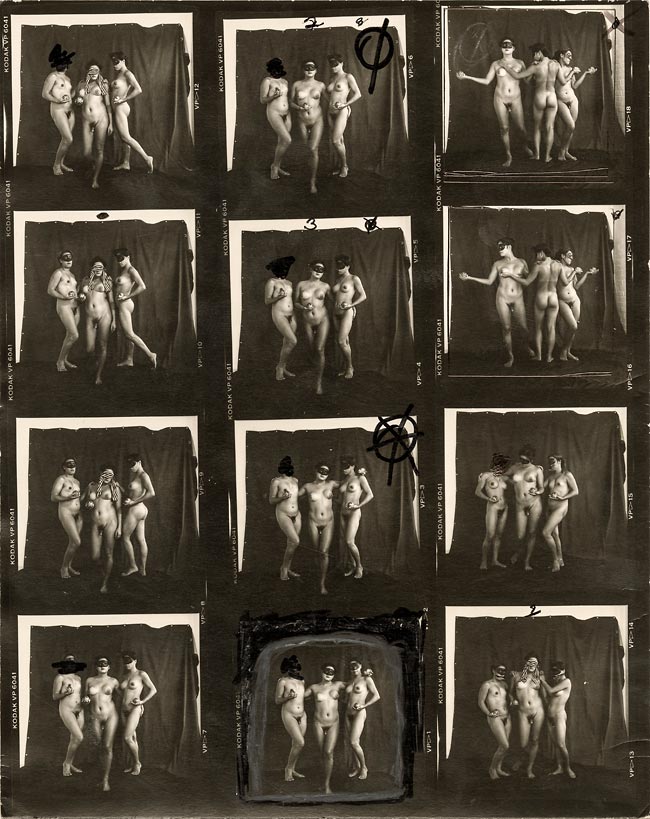
By treating the contact sheet as an extension of the final work, Witkin invites us to consider his images not only as art objects but as evolving expressions that challenge cultural norms. His photographs resonate with contemporary conversations around identity, gender fluidity, sexuality, and body positivity. In a very real sense, the contact sheets are themselves spaces of creative possibility, offering insights into the DNA for Witkin’s provocative imagery.
